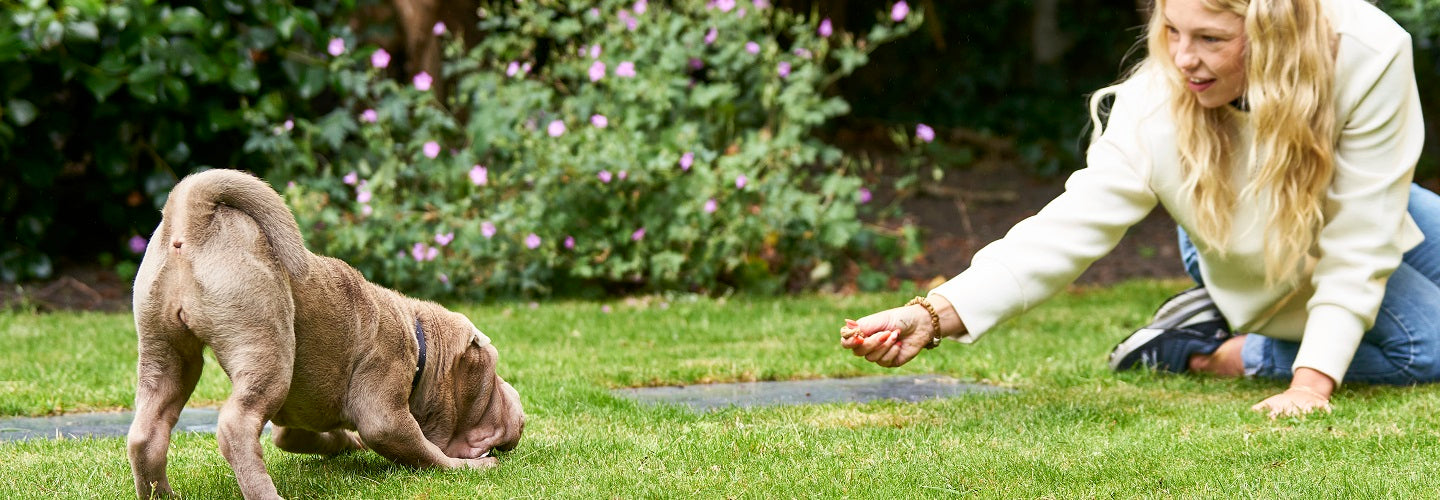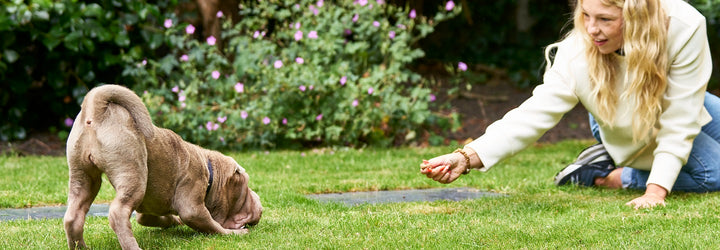

Posted by Steph Dainty, on
How to Deal with Adolescent Dogs
When it comes to your growing pup, the fun doesn’t stop! There’s plenty of development going on even past 6 months old.
Welcome to adolescence. Our lead trainer Steph has put together a guide on how to deal with adolescence as your dog grows into adulthood.
When does adolescence start in dogs?
Adolescence typically starts when your puppy is between 6 and 9 months of age but can range anywhere between 5 and 18 months depending on their breed. For small breed dogs, adolescence won’t last too long as they reach adulthood much earlier, however large breed dogs will experience adolescence for longer.
Adolescence is often a very frustrating time for pet parents, your pup has suddenly become much more independent and have hormones impacting their behaviour- much like a human teenager! And as pet parents, the best tools really needed to make it through this stage are patience, understanding and kindness.
Some studies suggest that around 50% of dogs in the UK who are given up to rescue centres are done so during their adolescence.
Because the frontal cortex of a dog is still developing during adolescence and a young dog’s ability to control their own behaviour is not fully developed, this is often mistaken for naughtiness. It’s important to remember that it doesn’t last forever, and training is key to help them through these changes. Contact your local dog trainer, who should recommend positive, reward-based training methods to help both you and you pup cope. There’s no ‘one size fits all’ solution, so working on a 1-1 basis with a trainer will help ensure your pup gets the right attention and dedication they need to handle the hormones.
What are the signs of adolescence in dogs?
There’s so ‘switch’ for your puppy transitioning to adolescence, some changes can be sudden whilst some start slowly. Things to look out for include:
- Unwillingness to engage with humans
- Scared of situations and objects which didn’t bother them before (other dogs, vehicles, strangers)
- Chewing/barking
- Showing signs of stress and frustration
Essentially, their changing sex hormones are affecting your dog’s response to stress. As your adolescent can’t process information about their environment as well as they have previously done- it can become frustrating for them. The connectivity between the frontal cortex (responsible for decision making) and amygdala (responsible for emotional processing) decreases, resulting in less behavioural control.
As a result of this, your pup can become overwhelmed with the world around them.
How can I help my puppy cope with adolescence, and how do I cope as a pet parent?
It’s important to allow your pup a little leeway through adolescence, small changes such as giving them a little more room to roam when you’re out walking in remote areas but keeping them close when there are other dogs/humans around can help your puppy navigate more effectively.
Give your puppy time to decompress, long, remote walks where they can sniff to their hearts content can help them relax.
Ensure your puppy has their rest in a comfortable, quiet place. As your pup becomes used to your house in those early months, they may want to engage in all the fun stuff, but when they reach adolescence, they can retreat to needing a quiet, secluded spot away from the hustle and bustle. This also allows them to process their memories more effectively too.
Should I continue training my dog during adolescence?
You can, but don’t be concerned if your puppy takes a step back in their training. It’s important to keep up with positive reinforcements, even if your puppy can’t master as much as they could previously.
If you have more questions about your puppy and their adolescent behaviour, you can speak to our pet experts at your local store- or online using our Pets Chat system.
